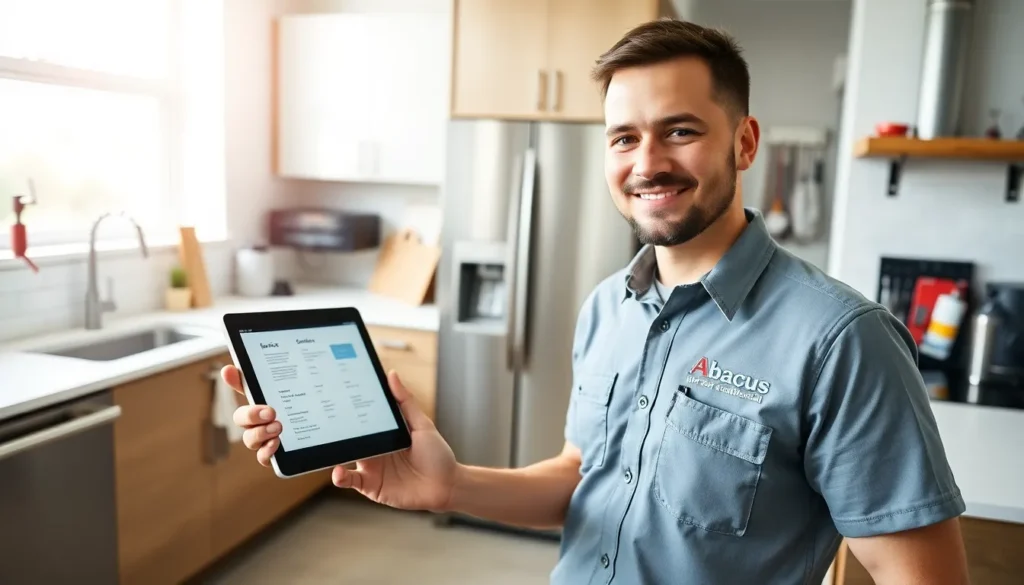In the world of construction and building management, mechanical, electrical, and plumbing systems are the unsung heroes. They work behind the scenes, ensuring everything runs smoothly, much like a well-oiled machine—if that machine had a penchant for pipes and wires. Without these systems, modern life would resemble a chaotic circus, with unexpected leaks and power outages stealing the show.
Imagine trying to enjoy a hot shower while simultaneously wrestling with a rogue electrical circuit. Not a pretty picture, right? Understanding the intricacies of mechanical, electrical, and plumbing systems is crucial for anyone involved in construction or renovation. With the right insights, one can avoid costly mishaps and keep the show on the road. Dive into the fascinating world of MEP and discover how it can transform your building projects from a slapstick comedy into a seamless performance.
Table of Contents
ToggleOverview of Mechanical Electrical Plumbing
Mechanical, electrical, and plumbing systems form the backbone of any building. These systems support essential functions, such as heating, ventilation, air conditioning, lighting, and water management. Each component requires careful planning and integration to ensure efficiency and reliability.
Mechanical systems include HVAC units, ductwork, and insulation. They regulate indoor climate through controlled airflow. Heaters and air conditioners must be appropriately sized for optimal performance.
Electrical systems encompass wiring, outlets, and circuit boards. Safety and regulatory compliance are critical in electrical design. Properly installed wiring aids in preventing hazards like short circuits and fires.
Plumbing systems involve water supply lines, drainage pipes, and fixtures. Effective plumbing design prevents leaks and ensures consistent water pressure. Components such as faucets and toilets must meet local codes and standards.
Collaboration among engineers, architects, and contractors is vital in MEP planning. This teamwork reduces conflicts during construction. Integrated design approaches minimize changes and mitigate delays.
Cost-effective solutions often arise from early MEP involvement. Identifying potential challenges upfront can prevent costly modifications later in the process. Efficient design fosters sustainable building practices by optimizing resource use.
Understanding MEP intricacies enhances project outcomes. Knowledge of these systems is key for successful construction and renovation efforts. Informed decision-making leads to smoother operations and satisfied occupants, showcasing the significance of mechanical, electrical, and plumbing systems in today’s structures.
Importance of Mechanical Electrical Plumbing
Mechanical, electrical, and plumbing (MEP) systems play a crucial role in the functionality and efficiency of modern buildings. Their integration into construction ensures seamless operations and enhances the overall living experience.
Integration with Building Design
Successful buildings incorporate MEP systems from the initial design phase. Architects and engineers design layouts that accommodate mechanical objects, electrical wiring, and plumbing infrastructure. This collaboration leads to optimized spaces that enhance comfort and reduces waste. Efficient integration streamlines installation processes while maintaining aesthetics and functionality. Well-planned MEP systems also allow for easier maintenance access, minimizing disruption during repairs or upgrades. Cohesive planning reduces the risk of costly modifications later in the project.
Impact on Efficiency and Safety
MEP systems directly influence a building’s efficiency and safety standards. Mechanical systems provide effective climate control, enhancing occupant comfort. Robust electrical systems prevent hazards through adherence to safety codes and regulations. Plumbing systems ensure efficient water management, mitigating risks such as leaks and water damage. Energy-efficient solutions lead to reduced utility costs and lower environmental impact. Moreover, effective collaboration among MEP professionals improves project delivery timelines, avoiding potential delays. Sustainable practices woven into MEP design contribute significantly to long-term safety and environmental responsibility.
Components of Mechanical Electrical Plumbing
Mechanical, electrical, and plumbing systems each play a vital role in a building’s functionality.
Mechanical Systems
Mechanical systems regulate a building’s climate through heating, ventilation, and air conditioning (HVAC). They ensure comfort by controlling temperature, humidity, and air quality. Various components, such as boilers, chillers, and ductwork, work together to distribute air effectively. Regular maintenance of these systems enhances efficiency and can prevent costly breakdowns. Engineered solutions increasingly focus on energy-efficient technologies to reduce operational costs and environmental impact.
Electrical Systems
Electrical systems provide power to lighting, appliances, and other crucial equipment within a building. These systems include wiring, circuit boards, and safety devices, ensuring compliance with local and national electrical codes. Adequate planning is essential for load distribution, preventing overloads that can lead to outages or fire hazards. Smart lighting and energy management systems contribute to sustainability efforts by optimizing energy consumption and reducing costs.
Plumbing Systems
Plumbing systems manage water supply, drainage, and sewage disposal in buildings. Pipes, fixtures, and valves work together to ensure reliable water access and effective waste removal. Proper installation and regular inspections are critical for preventing leaks and ensuring sanitary conditions. Sustainable plumbing solutions, such as rainwater harvesting and greywater systems, support water conservation efforts, promoting environmental friendly practices.
Best Practices in Mechanical Electrical Plumbing
Best practices in mechanical, electrical, and plumbing (MEP) systems ensure optimal building performance and efficiency. Implementing effective strategies during design and installation phases enhances overall functionality.
Design Considerations
Successful MEP design begins with detailed planning. Analyzing spatial requirements for mechanical, electrical, and plumbing components minimizes conflicts and maximizes efficiency. Engineers often collaborate with architects to integrate systems seamlessly into building layouts. Prioritizing energy efficiency in design steps reduces operational costs. Furthermore, anticipating future growth avoids costly modifications later. Sustainable practices, like utilizing renewable energy sources, contribute to long-term viability. These considerations improve not only performance but also occupant comfort and safety.
Installation Techniques
Installation techniques play a crucial role in the effectiveness of MEP systems. Choosing experienced professionals for installation ensures adherence to safety standards and building codes. Incorporating modular components simplifies the installation process and enhances accessibility for future maintenance. Effective communication among contractors, engineers, and project managers reduces errors during setup. Employing the latest technologies, such as Building Information Modeling (BIM), allows for precise planning and coordination. Finally, thorough testing post-installation identifies potential issues, ensuring systems operate optimally from the start.
Challenges in Mechanical Electrical Plumbing
Challenges in mechanical electrical plumbing (MEP) arise from various factors that can impact building efficiency and safety. Identifying these obstacles is essential for improving project outcomes.
Common Issues
Common issues often include improper installation, leading to inefficiencies in heating, cooling, and water flow. Coordination problems between trades may result in conflicts, complicating the repair or renovation process. Budget constraints frequently cause compromises in material quality, affecting longevity. Additionally, outdated technology can hinder performance, causing higher energy costs. Neglecting regular maintenance contributes to breakdowns, exacerbating these challenges. Recognizing and addressing these issues early strengthens the overall functionality of MEP systems.
Solutions and Innovations
Solutions and innovations in MEP address many of these ongoing challenges. Employing Building Information Modeling (BIM) enhances collaboration, allowing for precise planning and reducing conflicts. The use of advanced materials, such as energy-efficient HVAC components, significantly lowers operating costs. Implementing smart technology promotes automated system controls, improving energy management. Professional training ensures that contractors and engineers stay updated on best practices and emerging technologies. Regular maintenance schedules facilitate long-term reliability, minimizing unexpected failures. By embracing these solutions, stakeholders can enhance the performance and sustainability of MEP systems.
Understanding mechanical, electrical, and plumbing systems is crucial for anyone involved in construction or renovation. These systems are the backbone of any building and play a significant role in ensuring efficiency and safety. By prioritizing MEP planning and collaboration among professionals, stakeholders can avoid costly mistakes and enhance overall project outcomes.
Embracing innovative solutions and staying updated on technological advancements can further improve MEP functionality. This proactive approach not only leads to better building performance but also promotes sustainability and long-term reliability. Ultimately, recognizing the importance of MEP systems transforms construction projects into well-orchestrated successes.









